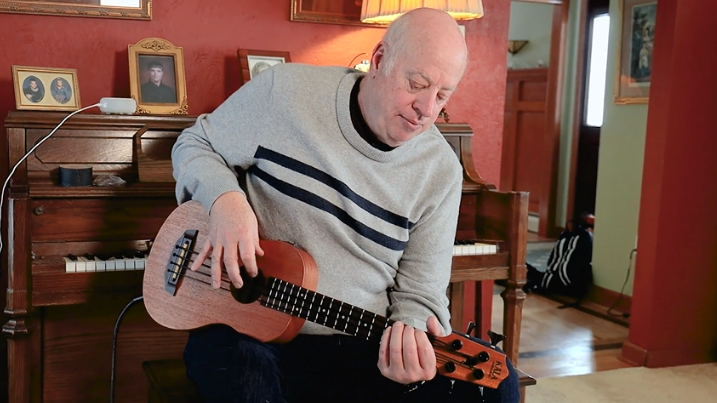Allegheny Health Network’s media relations team is dedicated to providing reporters and other members of the news media with the assistance they need.

Allegheny Health Network Neurosurgeon Performs the Region’s First Vagus Nerve Stimulation Procedure to Enhance Stroke Recovery
B-ROLL AND INTERVIEWS: https://f.io/lpCCNeXD
VIDEO of Vivistim® Paired VNS System: microtransponder | Showpad
Pittsburgh, PA – Stroke is a potentially debilitating neurologic injury which affects about 800,000 Americans annually and often results in a loss of mobility and motor function. A breakthrough therapeutic technology now being offered at Allegheny Health Network’s (AHN) Allegheny General Hospital (AGH) however, is offering new hope to stroke patients who have lost strength and motor control of their arms and hands.
The Vivistim® Paired Vagus Nerve Stimulation (VNS) System is an FDA-approved technology designed to help stroke survivors regain movement in their upper extremities by delivering mild, repeated electrical pulses to the vagus nerve, which runs from the brainstem through the neck and into the body. Research has shown that stimulating the nervous system through the vagus nerve can create new pathways in the brain, allowing the patient to regain function and strength faster than through rehabilitation alone.
Alexander Whiting, MD, neurosurgeon and director of epilepsy surgery at AHN’s Neuroscience Institute, recently performed the first VNS procedures for stroke recovery in western Pennsylvania. The technology, he said, offers a new pathway to recovery for patients who have reached the limits of traditional occupational and physical therapy.
Among the first to benefit from the innovative treatment is Scott Pavlot, 66, of Wexford, Pa.
Scott, a beloved community leader and musician suffered a life-altering ischemic stroke on Feb. 12, 2024, just two days after his birthday. The stroke left him with severe impairment on his left side, including paralysis of his arm and hand, threatening his ability to continue with his life’s passions — playing bass guitar and running The West View HUB, a nonprofit he founded to support the community through free arts, education, and food-assistance programs.
According to the American Stroke Association, an ischemic stroke occurs when a vessel supplying blood to the brain is obstructed. It accounts for about 87% of all strokes.
“I got a brand-new bass for my birthday and only got to play it for one day before the stroke,” Scott said. “At first, I couldn’t move my arm or fingers at all, but I never saw myself as disabled, just temporarily compromised. That’s why I jumped at the chance to try Vivistim. I wanted to push my recovery as far as I could.”
Traditionally, stroke rehabilitation focuses on repetitive movement exercises to help the brain form new neural pathways by way of its “neuroplasticity,” or the brain’s ability to rewire and reorganize itself. However, after about two to three months of therapy, many patients plateau, struggling to make further improvements. The Vivistim System is designed to extend and enhance that window of recovery by delivering mild electrical pulses to the vagus nerve.
The procedure involves implanting a small device, similar to a pacemaker, in the patient’s chest. A thin wire is then connected from the device to the vagus nerve in the neck, which serves as a direct communication highway between the brain and body.
“The VNS implant acts like a ‘turbo boost’ for the brain,” said Dr. Whiting. “Every time Scott engages in therapy, whether it’s practicing hand exercises or playing the bass, the device stimulates his vagus nerve, sending signals to the brain that tell it to ‘wake up’ and rewire itself more effectively. It accelerates the natural recovery process in a way that wasn’t previously possible.”
Once the device is implanted, patients use a handheld magnet to activate it during rehabilitation exercises and daily activities. For Scott, this meant using the device while practicing plucking strings on his bass, helping retrain his brain to restore fine motor control in his fingers.
“This isn’t just about regaining movement, it’s about reclaiming independence and identity,” said Dr. Whiting. “For Scott, playing music is a part of who he is. Watching him recover and pick up his bass again has been incredible.”
Since receiving the Vivistim implant in September 2024, Scott has made remarkable progress. Initially, his left arm was completely paralyzed, but through consistent therapy and the help of the VNS system, he has regained movement, finger articulation, and strength.
“The difference has been huge,” Scott said. “Typically, stroke recovery hits a wall after a few months. But with the VNS, I’ve continued to improve well beyond that point. My hand control is getting stronger, and best of all — I can play music again.”
The Vivistim System is a game-changer for stroke survivors who have not regained full hand and arm function. According to the American Stoke Association, stroke patients who use VNS therapy in combination with rehabilitation experience two to three times greater functional improvement than those who undergo therapy alone.
“For many stroke survivors, losing function in their hand means losing their ability to feed themselves, dress, or do the things they love,” said Dr. Whiting. “With VNS therapy, we’re seeing patients regain independence and hope. This is the first time we’ve been able to significantly change the trajectory of stroke recovery beyond the standard rehabilitation timeline.”
Scott sees himself as proof that stroke recovery doesn’t have to stop after a few months.
“You can’t be defined by a stroke,” he said. “I’ve always been active in my community, my faith, and my music. I laugh every day, I push myself every day, and now I have this incredible tool to help me keep improving. This isn’t the end of my story — it’s just a new chapter.”
For more information about Vagus Nerve Stimulation for stroke recovery at Allegheny Health Network, please call 724-228-1414 and select option 2.

